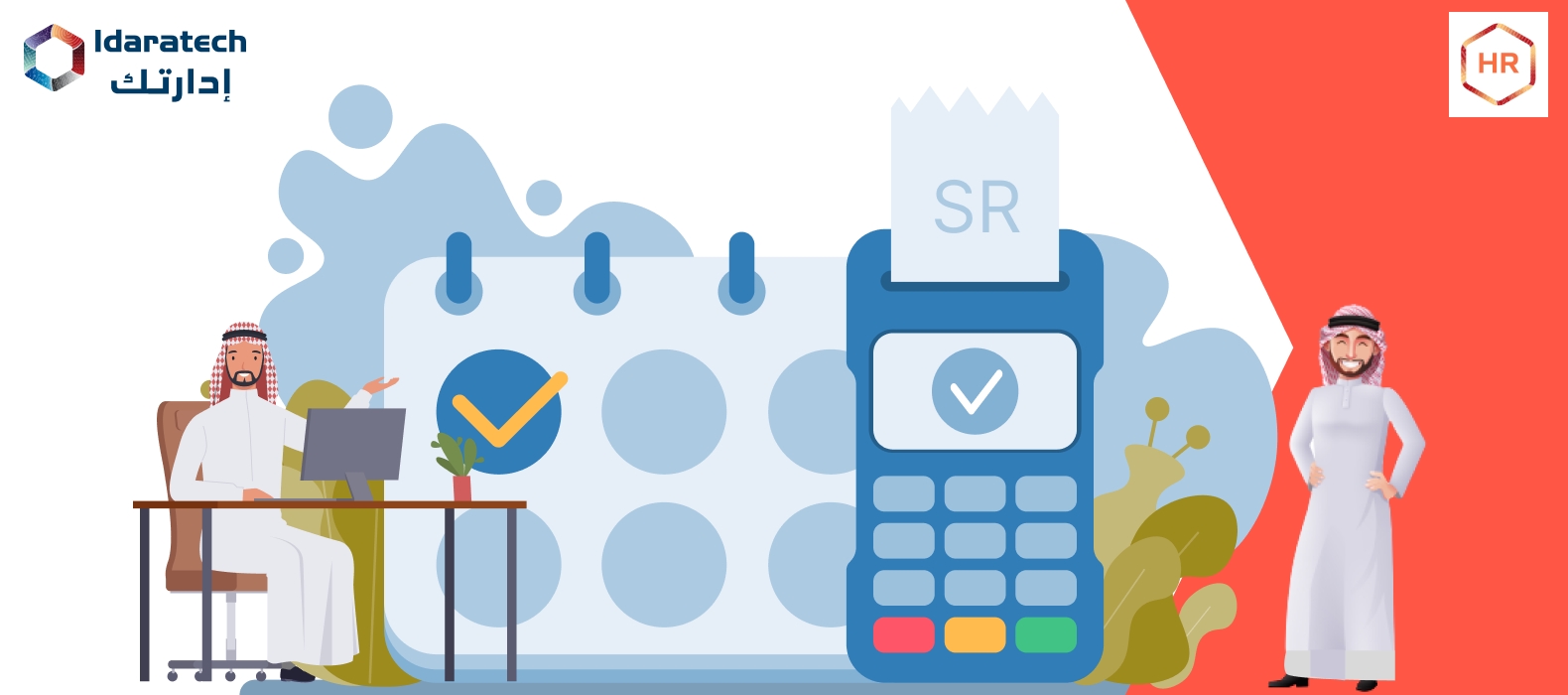Taking a vacation every year is not a bad idea. It enhances mental and physical health, as well as work-life balance. Since humans are not machines, we require breaks to recover. Numerous benefits of a healthy work-life balance include decreased stress, decreased chance of burnout, enhanced productivity, and improved well-being. In addition, both parties benefit from time off; companies reduce costs, see low absenteeism, and gain a devoted and effective team.
Out of all the HR policies, the leave policy garners the most attention right away. Employees take leave frequently; therefore, your company’s leave policy is tested daily.
In this blog, all aspects of the annual leave pay calculation policy design are addressed. Additionally, it makes recommendations for the HR professional’s best practices.
Benefits of a Good Leave Management System

Adopting an annual leave pay calculation management system will benefit the organisation, not just reduce errors. A strong leave management system has many advantages. What the best leave management software does for you is as follows:
1. The end of paperwork:
Traditional leave records could be more efficient. Systems for managing annual leave pay calculation can put an end to the tedious quantity of paperwork. Spreadsheets can be messy when handling large volumes of data and can be manually deleted, updated, or amended by mistake. Nearly 0.86% of all hard drives worldwide had failed by 2020. The best strategy to reduce human error and the likelihood of data loss is to save employee leave data in a leave management system.
2. Easily accessible:
Employees should have easy access to data, which must be kept in a form that makes it impossible to change without permission. Finding this balance is frequently difficult. Additional approvers, such as the HR manager, project manager, supervisor, etc., often need to approve leave in addition to the manager.
These experts all require access to the leave plans, histories, and balances of all the workers who report to them. These issues are all resolved by the single dashboard in an annual leave pay calculation management system. In addition, all parties can access employee leave data due to Idartech HR Worldwide’s cloud-based technology.
3. Improved Communication:
You can check team members’ availabilities in the required timeframe using a central system and database that contains all of the details regarding planned annual leave. With improved communication channels in place, clarity is likely. In addition, you can manage the leave of team members who provide their expertise throughout the business with the help of the leave and attendance management system.
4. Time-Saving:
According to Salary.com, the average Human Resource Manager in the US makes $105,88 per year. It will require 84 working hours per year, assuming the manager spends 7 hours per month monitoring leave and updating the balance for 50 employees. This will be very expensive for the business and reduce productivity.
The time it takes to compile leave requests will increase as the business expands. This can be done more affordably and successfully using a leave and attendance management system. This illustration demonstrates the considerable return on investment (ROI) in automating leave and attendance management systems.
5. Data visibility in real time:
It would help if you had pertinent facts to make an informed conclusion. Time can be wasted entering and maintaining data on a spreadsheet, which could cause the decision-making process to be delayed. Additionally, the data can need to be updated, which could result in poor judgement.
Using a sophisticated leave and attendance management system, you can rapidly keep and retrieve data. You may use the most recent data provided by your software to make swift decisions with accuracy due to real-time data visibility.
Several Ways that Help in Annual Leave Pay Calculation
An HR management system can help in the analysis of annual leave pay calculation in several ways:

1. Automating the process:
An HR management system can automate annual leave pay calculation, reducing the risk of errors and saving time for HR staff.
2. Tracking employee leave:
The system can track employee leave requests and approve or reject them based on company policies. This ensures that employees are not overpaid or underpaid for their annual leave pay calculation.
3. Keeping accurate records:
The system can keep accurate employee leave records, including the number of days taken, the dates of leave, and the pay earned. This information can be used to calculate annual leave pay calculation and ensure compliance with labour laws.
4. Managing accruals:
An HR management system can manage annual leave accrual, ensuring that employees earn leave based on the number of hours worked or the length of service.
5. Generating reports:
The system can generate reports on employee leave, including the number of days taken and the pay earned. This information can be used to plan for future leave and budget for leave pay.
6. Integrating with payroll system:
The system can integrate with the payroll system, automating calculating and paying annual leave pay.
Overall, an HR management system can help ensure compliance with labour laws, streamline the process of annual leave pay calculation, and provide accurate records that can be used to plan for future leave and budget for leave pay.
Suggestions to Enhance a Leave Management System

The leave management system streamlines business and employee operations by automating annual leave pay calculation management. As a result, the process complexity is decreased, and the leave management solution may save time. Here are six suggestions for developing a strong leave management system:
1. Specific Leave Policies:
Making a leave policy is the first step in enhancing leave management. Doing so balances the business’s interests while ensuring that the employees are informed of their rights.
The ideal leave management system would let HR develop and oversee open leave policies. The software allows for creating rules for things like half-day calculations, sick days, maternity leaves, paternity leaves, and public holidays. In addition, HR management can streamline the approval process by using a departmental hierarchy.
2. One-stop dashboard:
While requesting leave, workers should be able to view their remaining vacation time as well as the vacation days of their coworkers. Again, this necessitates a single dashboard that all employees may view.
An all-in-one dashboard vastly increases an annual leave pay calculation management system’s usability and effectiveness. To accurately assess a leave request, department leaders and HR specialists should have access to each employee’s leave history, balance, department calendar, holiday lists, and workforce coverage.
3. Leave Management Software:
You can buy software that keeps track of employees’ time off requests, leave requests, and holiday requests. Such software is useful since it streamlines the approval process for leave applications and maintains a history of available and unavailable leave.
An on-the-go, multi-channel access is provided by a cloud-based leave and attendance management system, negating the need to instal and maintain software. The system is now portable and available at all times due to this. Requests for leave can be submitted, denied, approved, or cancelled at any time and from any location by your employees.
4. Leave Balances:
Each employee’s leave balance should be manually entered; however, this is inefficient, expensive, and time-consuming. If a leave management system can’t determine the leave balance, buying it is pointless. A good leave and attendance management system keeps track of and documents employees’ leave usage. On a single platform, all past leave requests may be viewed. This enhances the leave management service and raises organisational openness.
5. Communicating Effectively:
Effective employee communication is crucial for developing a strong leave and attendance management system. Employees should be fully aware of their responsibilities before, after, and during any time they take off. As a result, the workplace becomes more cheerful, and people start to trust the company.
7. Statutory Compliance:
Every organisation is accountable for managing leave and attendance in compliance with applicable labour rules and regulations. The standards set by the government and businesses should be reflected in leave policies. It is crucial to inform employees of their rights so that they are aware of their benefits.
Employees can better create time-off rules that adhere to state and local regulations by automating the leave management system. For example, automatic alerts are sent if yearly leave allowances are overbooked, making it difficult to exceed the predetermined level. However, non-compliance can damage the company’s reputation, and more employees may even bring a lawsuit against you for using unfair leave policies. As a result, it’s crucial to follow current legislation and labour laws.
Conclusion
An HR management system can help annual leave pay calculation by automating the process and ensuring accuracy. For example, the system can track an employee’s leave balances, automatically calculate payment based on their salary and the length of leave taken, and update their leave records. This can save time and reduce the potential for errors compared to manual calculations. Additionally, the system can generate reports on leave usage and pay, which can be useful for budgeting and forecasting purposes.
FAQs
Question 1: How does an HR management system help in annual leave pay calculation?
An HR management system can automate the calculation of annual leave pay by using information about an employee’s salary and tenure to determine their leave entitlement and pay rate. This can save time and reduce the risk of errors compared to manual calculations.
Question 2: Can the system handle different leave policies for various departments or locations?
HR management systems can be configured to handle different leave policies for other departments or locations. This allows the system to accurately calculate annual leave pay based on the specific approach that applies to each employee.
Question 3: How does the system account for different pay rates for other employees?
HR management systems can be configured to use different pay rates for other employees based on factors such as their job title, seniority, or union membership. This allows the system to calculate annual leave pay for each employee accurately.
Question 4: Can the system track and record an employee’s leave usage and balance?
Yes, an HR management system can track and record an employee’s leave usage and balance. This allows the system to accurately calculate annual leave pay calculation and ensure that employees do not exceed their leave entitlement.
Question 5: Can the system handle pro-rated leave pay for employees joining or leaving mid-year?
Yes, an HR management system can handle pro-rated leave pay for employees joining or leaving mid-year. This allows the system to accurately calculate annual leave pay based on the time the employee has been with the company.

